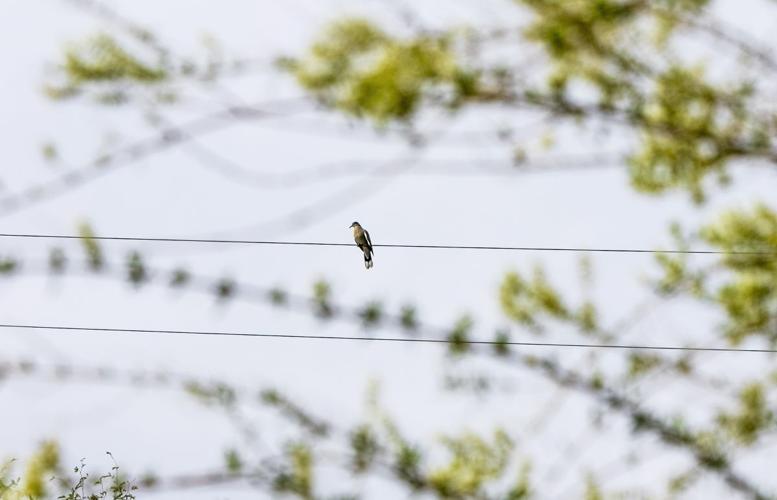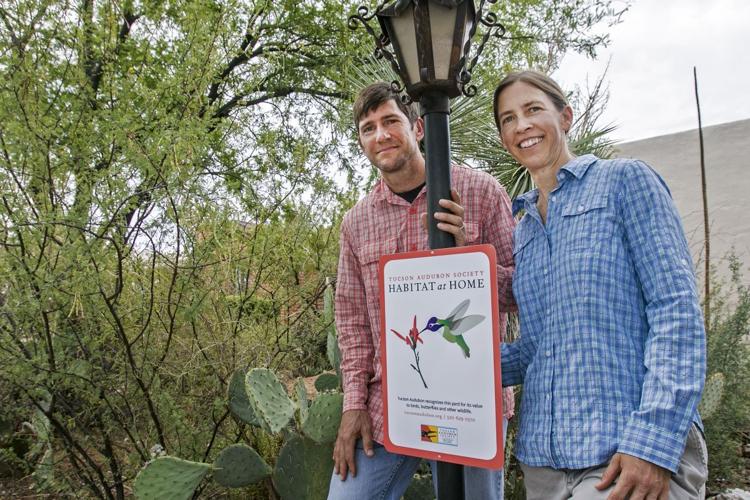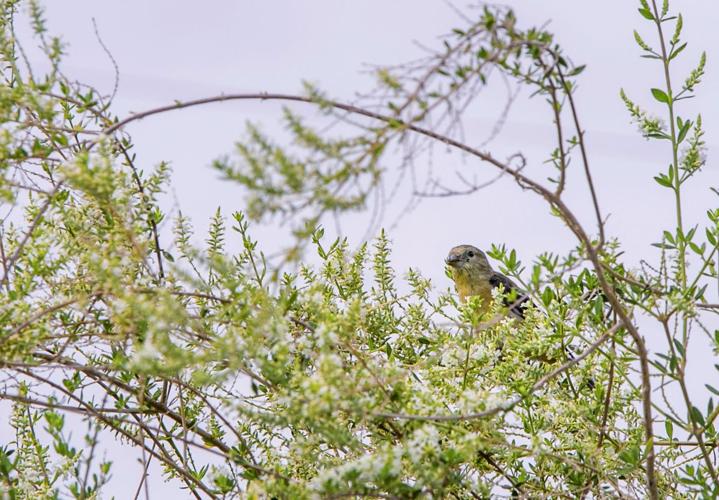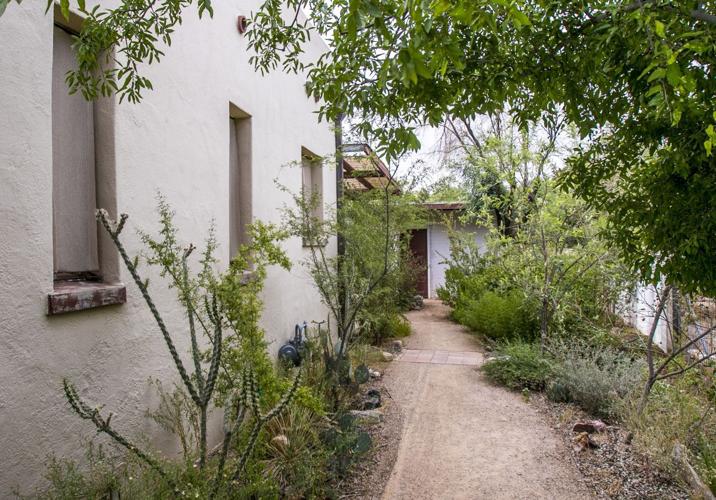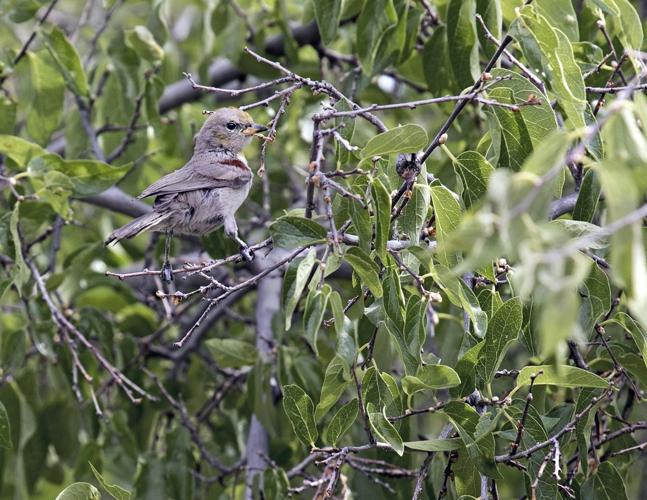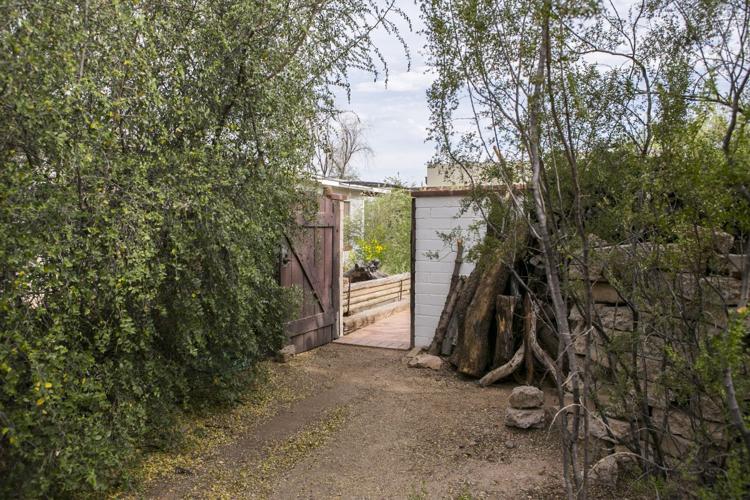Jennifer Patton loved watching quail and other native birds when she was growing up in her east-side Tucson home.
Patton moved to midtown when she became an adult and noticed only common city birds, mostly sparrows and pigeons.
Now, some of the desert natives are back in Patton’s life because of the wildlife refuge she and husband, Ben Wilder, established around their home near the Arizona Inn.
Their efforts for the birds have earned them the first Habitat at Home recognition by the Tucson Audubon Society. It was easy to get the designation because the couple had been working at it on their own for nearly 20 years.
Patton, a landscape designer who owns Wilder Landscapes LLC, discovered that they qualified for the highest level of recognition after she heard about the program and looked at the requirements.
“We met all of them,” says Patton.
BUILDING UP HABITAT
Tucson Audubon launched the Habitat at Home program earlier this year as a way to encourage folks to provide food, shelter and safety to native species.
“We thought it might be a good thing to do because we don’t believe supporting populations of birds can only be done through preserving wilderness and conserving natural resources,” says Kendall Kroesen, who manages the program.
“We don’t believe that is enough. We need to reconcile that we live with the needs of birds.”
Creating bird-friendly gardens and landscapes can attract species that are marginally successful in urban areas.
“We need to continue to supply the native trees and shrubs that they’re using to make sure they appear in our new suburbs,” Kroesen says. “The real key is to find ways of supporting some of those species that haven’t adapted well so far, but they might.”
The primary way to do that is to plant native trees and shrubs that provide food and water, nesting material and sites and places for cover, he says.
It also includes keeping hunting cats away and making windows visible to birds so they don’t run into them. These are the second- and third-biggest threats to birds in urban areas.
“The program as a whole is designed to address the biggest threat to birds, which is loss of habitat,” he says.
BECOMING BIRD-FRIENDLY
Patton and Wilder’s yards originally were a wasteland for native birds. When the couple bought the house in 1998, only eight of the 24 species of plants in the landscape were native to the Sonoran Desert, Southern Arizona and Mexico.
The exotics included Burmuda grass, citrus trees, oleander and African sumac. The landscape was covered in rock mulch and the driveway was concrete.
“It was a typical yard that attracted typical urban birds,” says Wilder, a self-described “city slicker” who grew up in Phoenix.
Today, their gardens have 100 species of plants, 92 of which are native or regional species. The couple planted specimens that do well in the clay soil on their property, including wolfberry, hackberry, mesquite, cactus and yucca.
Patton says she was confident she was on the right track. Wilder, an information technology manager at an engineering firm, wasn’t convinced until they planted their first wolfberry. It attracted a phainopepla, a crested songbird not often seen in the city.
“It took only one shrub,” Wilder says in amazement. “I thought, ‘How is that possible?’”
Today the yards provide an endless scene of bird and other animal activity. The alleyway, covered in prickly pear, fairy duster, agave and ironwood, has been home to nesting Albert’s towhees.
Goldfinches constantly perch and feed on the aloysia, also called bee bush. Cardinals collect fallen twigs from the plant for nests.
The concrete driveway has been replaced with a dirt and mulch path lined on both sides with shrubs and cacti, giving lizards enough cover to dart back and forth.
Lizards, as well as native carpenter bees, make their home on a 3-foot-high dirt mound on which a salt bush has grown to give cover to birds.
Even dead plants have attracted birds. Brush piles attract quail looking for safe places to feed. Ladder-backed woodpeckers look for grubs in a dead velvet mesquite.
The downside so far is that the couple can’t maintain a veggie garden out in the open. “Quail really like kale,” Patton observes. They hope to build an enclosed space soon to remedy that situation.
Other than that, they watch and respond to what the birds want in their landscapes.
“The birds drive it to some extent,” says Wilder, who hopes they can figure out how to attract the quail that disappeared this year. “We continually try to target some species, like the quail.”
CITY FOR THE BIRDS
While Patton and Wilder have the first house to be recognized under the Habitat at Home program, several others are in the pipeline for designation, says Kroesen.
He hopes it’s the start of a metro-wide effort to bring native species into urban and suburban areas.
“We think there’s a huge opportunity in the greater Tucson metropolitan area,” he says. In the future, he’d like to designate schools, businesses and parks, but, “We’re starting with backyards.”


